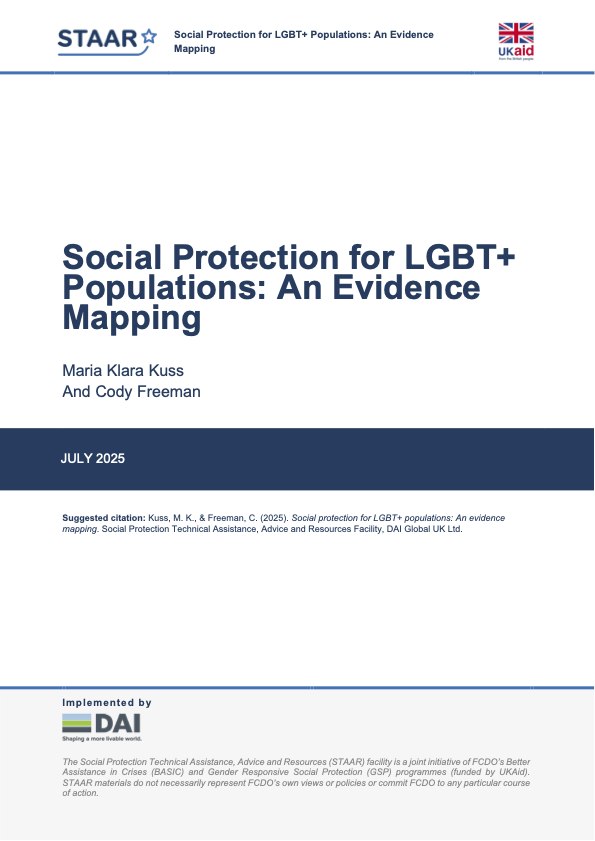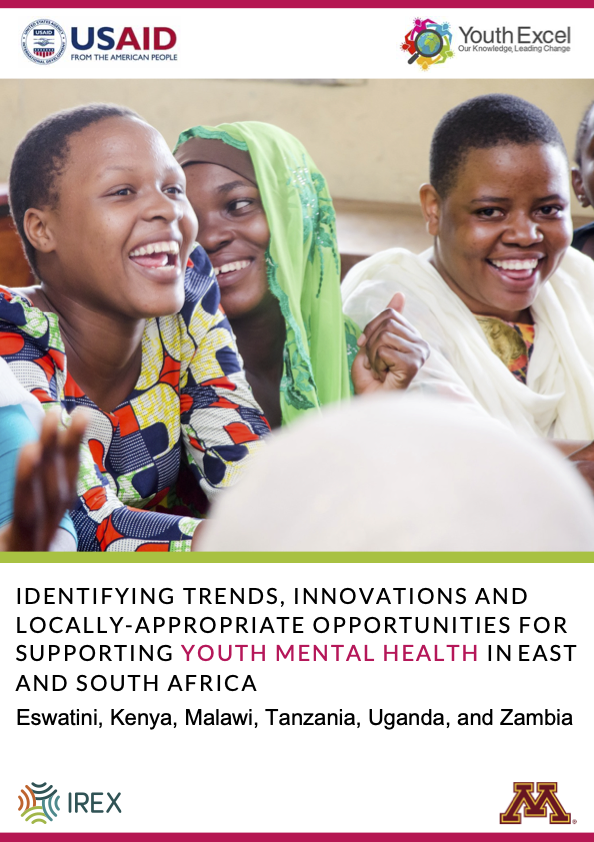Social Protection for LGBT+ Populations: An Evidence Mapping
Publisher: Social Protection Technical Assistance, Advice, and Resources Facility, STAAR
This report maps the existing evidence on LGBT+ inclusive social protection and examines what is currently being done to provide LGBT+ persons with social protection, what works, and what gaps remain. It is a crucial and timely study, as LGBT+ populations worldwide face numerous barriers and intersecting vulnerabilities—many of which are intensified in the current global context. Moreover, it addresses a significant blind spot in the gender-responsive social protection literature, which has primarily focused on the needs of women and girls. Drawing on a scoping review methodology and a database of 51 documents spanning both academic and gray literature, this report presents the state of evidence on social protection for LGBT+ persons.
The findings reveal that while LGBT+ inclusive social protection remains a nascent field, a growing body of work is beginning to emerge mainly from within LGBT+ scholarship and advocacy. This emerging literature adopts a broader lens, addressing a diverse set of challenges faced by LGBT+ populations and engaging with a wide range of social protection instruments, including systems linkages and informal social protection. The resulting database is rich and detailed, offering insights into existing programmes that support LGBT+ persons, pathways of support, and key implementation factors that influence their effectiveness and safety.
Queer Youth Futures Now! Education and Research as a Transformative Praxis for Queer Youth Globally
Despite growing movements, queer youth find themselves in the spotlight of intense backlash. While anti-queer activism becomes increasingly visible, queer youth activists engage in worldmaking practices through their educational activism. This narrative literature review examines how scholarly literature discusses education and research as a transformative praxis to further queer youths’ envisioned ways of being and their activism in the future. Employing the concept of queer futurity, this article highlights how queer youth move through time and space, co-create knowledge through participatory research, and engage in activism within and beyond school settings. It also underscores the need for critically reflexive, relational research methodologies that center queer youths’ lived experiences. This article concludes with an invitation to reconceptualize pedagogical, methodological, and theoretical approaches that might foster movements and facilitate what is possible.
Identifying Trends, Innovations and Locally-Appropriate Opportunities for Supporting Youth Mental Health in East and South Africa
USAID Youth Excel: Our Knowledge Leading Change, implemented by IREX, aims to empower youth, youth-led, and youth-serving organizations to meaningfully contribute to solutions regarding youth development issues at the local, national, and global level.
This report identifies the trends, innovations, and opportunities among 342 Africa-based youth development projects submitted to IREX-Youth Excel for funding in 2021. The USAID Youth Excel’s 2021 grant competition sought proposals to strengthen mental health for marginalized, key, and/or vulnerable youth across East and Southern Africa. Issues identified as historically most impactful to youth mental health included poverty, inadequate economic opportunities, unhealthy coping mechanisms, diseases such as HIV/AIDS, gender-based violence, political conflict, and harmful cultural norms. Because the grant competition took place during the COVID-19 pandemic, growing health, economic, and educational inequities were also cited as top contributing factors to mental illness.
This report addresses the following questions through a selective reading of 342 grant proposals:
What are some of the problems that community-based organizations in Africa are aiming to address in order to enhance mental health and/or psychosocial support for vulnerable and marginalized youth?
What programs and activities do these organizations propose as potential solutions and/or interventions to promote positive youth development?
What were the qualitative differences between four proposals that were funded versus those that did not?
Moving forward, what are some of the key gaps and recommendations for policymakers and donors?
During the grant period, four selected grantees carried out implementation research and shared their work broadly. You can learn more about their work at the link below.


